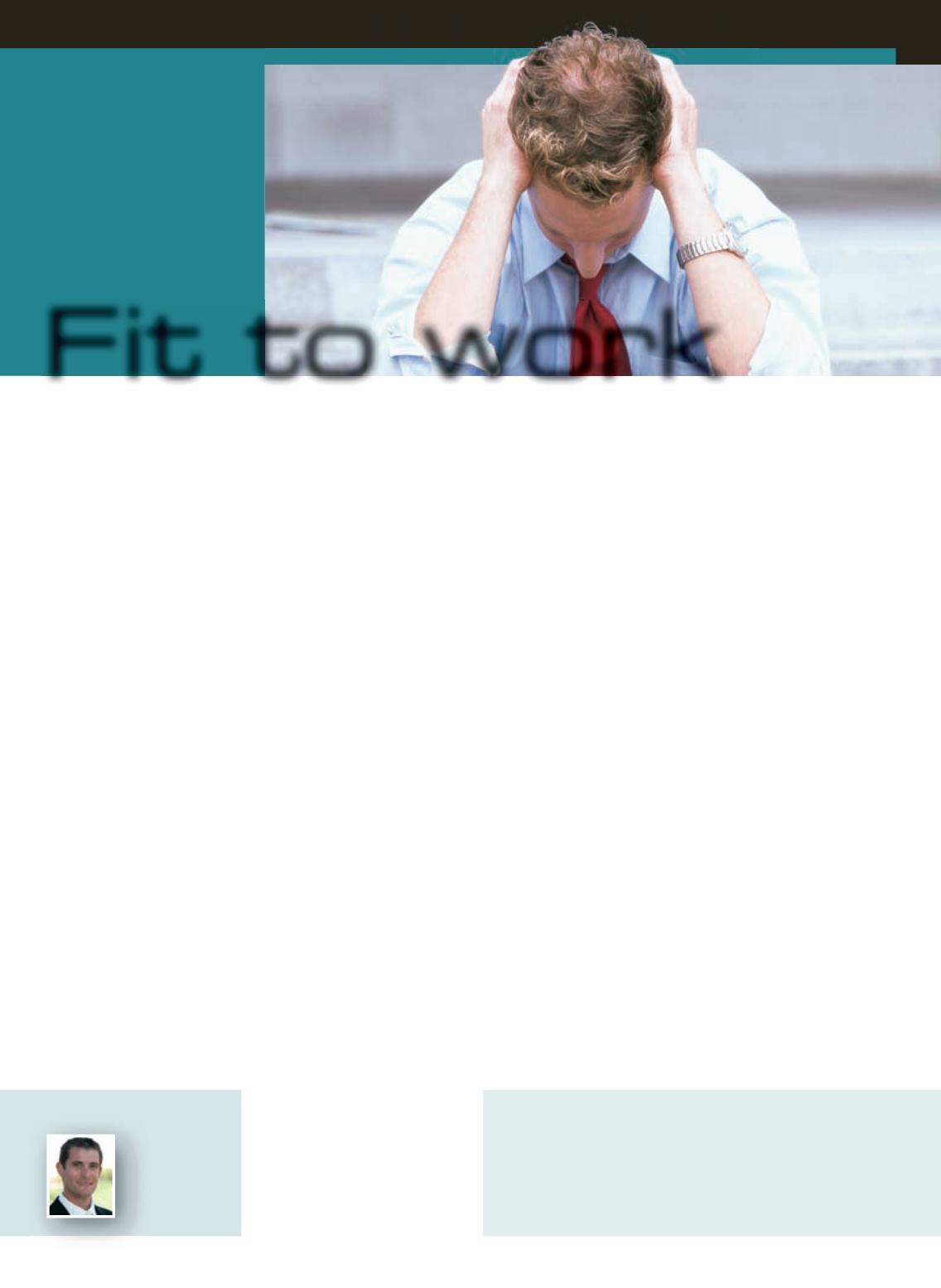
SAFETY
2. Mental
In my opinion a person
being mentally fit for duty
encompasses two areas: their
temporary mental state due
to inhibitors such as drugs,
alcohol or lack of sleep and
the amount of knowledge
that a person possesses.
A robust drug screening
program consisting of pre-
employment, post-accident,
random and for-cause drug
screening is the most effective
method of discouraging the
use of illicit substances. A
fatigued work policy that
places restrictions on the
number of consecutive days,
hours or some variation is
difficult but is an effective
way to ensure that work alone
is not a cause of an unsafe
mental state. Regulatory
agencies are increasingly
mandating testing,
(verification of knowledge), to
cover the knowledge portion
of being mentally fit for duty.
Craft- and company-specific
training that begins with new-
hire orientation and continues
throughout a person’s career
should be the goal. If we feel
that an employee does not yet
17
OCTOBER 2013
ACT
our responsibility to ensure,
to the extent possible, that our
employees are ready before
commencing work.
According to OSHA’s
definition, fitness-for-duty
means that an individual is
in a physical, mental and
emotional state that enables
them to perform the essential
tasks of their work assignment
in a manner which does
not threaten the safety or
health of oneself, co-workers,
property or the public. Let’s
use this definition as a guide
and look at some options for
compliance.
1. Physical
In order to know if an
employee is physically fit
for a position, it is necessary
to know the applicable
physical demands. Written
job descriptions are very
helpful in this area. Once the
demands are known a physical
exam can be administered
by a medical professional
using the job description as a
guide. We as employers can
set parameters for the test
including specific items like
climbing ladders, etc. Let’s not
forget that in most cases an
aggravation of a pre-existing
condition or former injury
becomes a compensable
injury for us as well as
meeting OSHA’s recordability
standards. We must stress to
employees the importance of
not doing more than they are
physically able.
‘‘
Let’s do our best to ensure that the
employees representing our companies are
truly fit for the tasks at hand.
THE AUTHOR
Daniel Erwin
is director of
safety for TNT
Crane & Rigging
in Houston.
Daniel Erwin
discusses
OSHA’s
definition of
‘fitness for duty.’
have the knowledge for a task,
they should not be assigned to
do it alone.
3. Emotional
This one can be
harder. I think the only
reasonable solution lies in
communication. Supervisors,
managers, or others should
be as present as possible with
field employees. We need to
ensure that a communication
channel is provided and
open for those who need
it. Workplace violence is a
huge issue and many of these
episodes come only after
repeated signs of emotional
distress that went unreported
or unnoticed. We should do
our best to comply with the
requirement of frequent and
regular audits but look at
more than compliance with
standards. Any time we place
employees in front of others
as a check of potential issues
of an emotional type we are
ahead of the curve.
Let’s do our best to
ensure that the employees
representing our companies
are truly fit for the tasks at
hand.
■
Fit to work
M
y son seemed
so small as he
climbed on
the bus for his first day of
kindergarten. As I watched
him excitedly waving through
the bus window I thought of
how strange it seems to walk
away from a 5 year-old, push
him into the world and “hope
for the best.”
How can we rest assured
that those responsible for him
at school are truly fit for the
duty? We assume that the bus
driver is fit for duty by having
the correct license, is in the
right state of mind and is truly
trained and qualified to engage
in the riskiest activity available
– driving. We likewise assume
that teachers have the proper
fitness for duty by trusting
our children in their care. We
don’t demand to see teaching
certificates, driver’s licenses or
drug test results…we simply
assume and trust.
As employers, we don’t
have that same ability, or at
least we shouldn’t exercise it.
We cannot hire or promote
personnel, assume they are
fit for duty, and put them in a
position to represent us. It is


